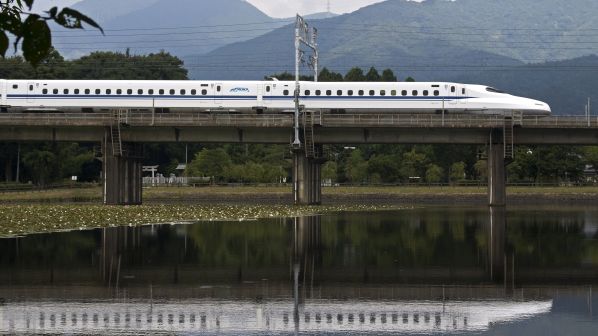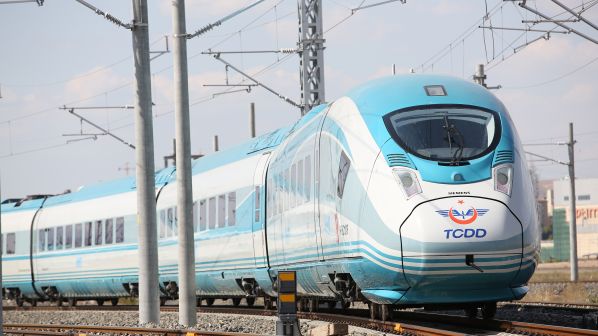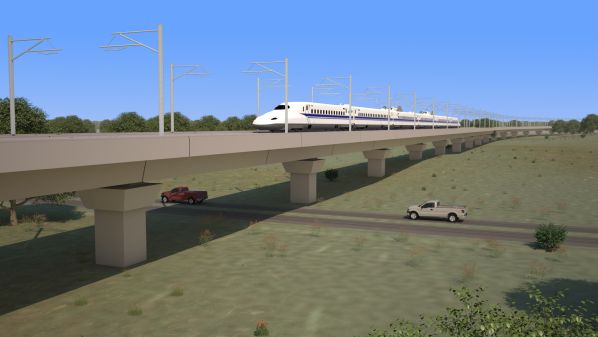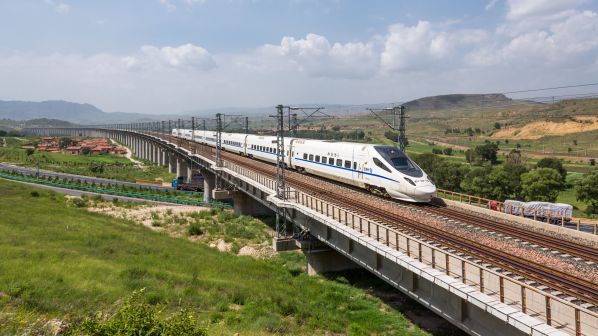JUST over half of the total high-speed track planned or under construction in 2019 is in China. At the start of the year China State Railway Group’s annual plan envisaged a 45% increase in new projects, which included an added 3200km of high-speed lines. 2019 has been China State Railway Group’s biggest year on record for investment at $US 125bn.
The increase in infrastructure spending has coincided with the slowing of the Chinese economy. The investment is part of a stimulus package, which also consists of tax cuts, boosting the money supply and tweaking banking regulations in an attempt to invigorate the economy.
Key project
One of this year’s key projects is the Yukun High-Speed Railway, a 698km line between Chongqing and Kunming, construction on which began in September. The project is estimated to cost Yuan 141bn ($US 19.7bn) and will have a target speed of 350km/h, serving 18 stations.
The line is expected to solve the lack of fast passenger transport links in the southwestern region of the country. After completion the line will form part of a network along the Yangtze River Economic Belt, connecting a series of large and medium-sized cities.
The Hubei High-Speed Railway is another key project, linking Xi’an and Shiyan. It passed its preliminary design and feasibility studies in May. Construction of the 253km line is expected to begin later this year and will take 4.5 years to complete. The project is estimated to cost around Yuan 58bn and serve seven stations.
In India, the 508km Mumbai - Ahmedabad high-speed line that will be built at the cost of $US 15bn, is under construction after officially launching in September 2017. Trains on the route will be able to run at up to 320km/h and travel the distance between Mumbai and Ahmedabad in just over 2 hours, covering a route serving 12 stations.
The project is led by Japanese company JR East and is not expected to become operational before 2023 due to land acquisition issues. New high-speed projects in India will use Japanese ‘Shinkansen’ technology in the hope of transforming India’s economy as it did for Japan, connecting cities critical for growth.

In addition to the Mumbai - Ahmedabad high-speed line, five other lines covering the Diamond Quadrilateral are being explored, which will connect the four mega cities of Delhi, Mumbai, Kolkata and Chennai and will cover over 10,000km.
The first phase of an 873km line between China and Thailand is expected to begin operation in 2023. The Baht 180bn ($US 5.9bn) first phase will connect Bangkok with the north eastern province of Nakhon Ratchasima. The project is part of China’s planned network across southeast Asia and will eventually connect Kunming with Singapore. Construction contracts will be finalised at the end of 2019.
KL - Singapore
In June, Malaysia’s MyHSR appointed consultants Minconsult, Malaysia, as Technical Advisory Consultant (TAC), while Ernst & Young (EY) will act as Commercial Advisory Consultant (CAC) for a technical evaluation of the $US 11bn project to build a 350km high-speed line between Kuala Lumpur and Singapore. Work is expected to conclude by the end of the year, at which point MyHSR will report the findings, and possible cost reduction options to the Malaysian government. The current administration suspended the project in September 2018 until May 2020 to allow time to review the cost.
In November 2018, Vietnam’s state-owned consultancy companies TEDI, Tedis and Tricc suggested the construction of a 1545km high-speed line running through 20 cities and provinces. The $US 56bn project is expected to reduce the travel time from Hanoi to Ho Chi Minh City from 30 hours down to just 5h 30min. Most of the track will run on viaducts (60%), with around 10% underground. The line will run on double standard-gauge track and will serve 24 stations.
The project will consist of three separate sections of investment and construction. Hanoi - Vinh (282.65km) and from Nha Trang city to Ho Chi Minh City (362.15km) are planned for construction in the first phase, which is due to be finished by 2030.
Hyundai Rotem has recently shown interest in the project, offering technology transfers and training services for local partners. The Ministry of Planning and Investment said in July that it would be $US 32bn cheaper to have a line that would run at speeds of 200km/h, after receiving analysis from experts in Germany and the Netherlands.
Turkey is planning to invest $US 45bn into 10,000km of high-speed rail and 4000km of main line by 2023. The ambitious plans will extend the existing high-speed network to Istanbul, Bursa, Izmir and Antalya, and from Ankara east to Sivas and Erzurum, connecting 15 major cities.
The 405km Ankara - Sivas high-speed line is set to open in May 2020, and was 95% complete as IRJ went to press. The project includes 49 tunnels totalling 66km in length, with the longest at over 5km. The project also includes over 600 bridges and 217 over and underpasses. The line will serve one of the country’s most important routes, connecting with Asian countries on the Silk Road. Tests on the line are expected to start towards the end of this year.

The Lira 4.9bn ($US 1.3bn) high-speed project connecting Ankara and Izmir will drastically cut the current travel time of 14 hours by road to just 3h 30min. The new route will reduce the distance by rail between Izmir and the capital from 824km to 624km. The first section between Usak, Afyon and Polatli is expected to carry its first passengers by the end of 2019, with the Usak - Izmir section planned to open at the end of 2020.
In the United States, Texas Central Railway took another step forward in September, announcing a design and build contractor for the 386km line. Texas Central, the Dallas-based company developing the project, awarded the $US 14bn construction contract to Italy’s Salini Impregilo.

Once complete the new line is expected to link Dallas and Houston in under 90 minutes, with trains departing every 30 minutes during peak hours.
The Federal Railroad Administration (FRA) granted Texas Central’s petition to have a custom set of rules created for the railway, to ensure safety and govern system and operations in September. Construction of the line is expected to begin next year. The line will be entirely privately financed, making it the first private high-speed line in the world.
California High-speed Rail Authority (CHSRA) released a request for qualification (RFQ) in July for a $US 1.6bn design-build-maintain contract to equip the 191km Merced - Bakersfield Central Valley section of the state’s high-speed rail project.
The 320km/h line was originally planned to connect San Francisco, Sacramento, Los Angeles and San Diego. Plans were scaled back by the governor of California, Mr Gavin Newsom due to the high costs involved. However, construction works are pushing ahead on the three construction packages that make up the Central Valley section, with more than 3000 construction jobs already created. Construction work is scheduled to conclude in 2022.
Stay on top of the latest projects, fleet orders and Global Rail Tenders with IRJ Pro

